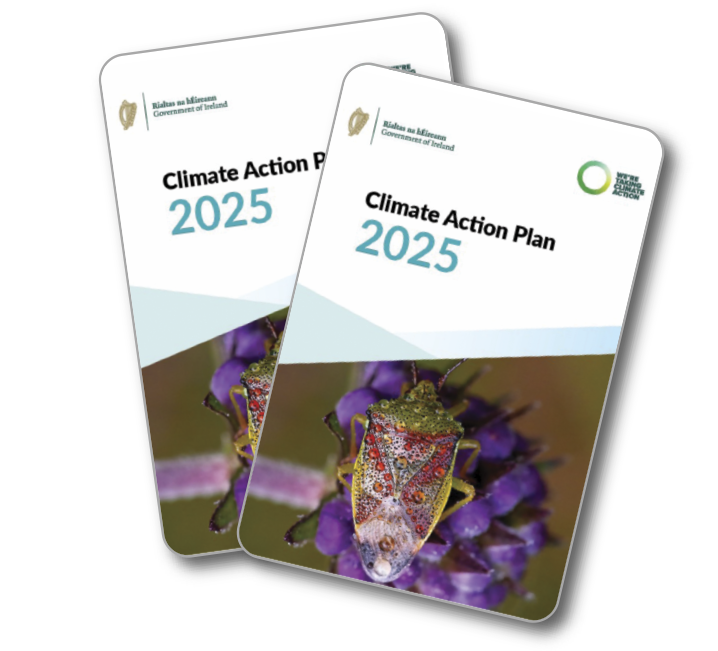Addressing transport emissions

The transport sector is on course to exceed its sectoral emission ceiling of 54 million tonnes of carbon dioxide equivalent (MtCO2eq) set in the first carbon budget (2021-25) according to the Climate Action Plan 2025 (CAP25) published in April 2025.
Cumulative transport emissions from 2021 to 2023 have totalled 34.64 MtCO2eq, leaving a budget of 19.36 MtCO2eq for 2024 and 2025. For transport to remain within the sectoral emissions ceiling, it would require “an unprecedented 12.4 per cent decrease in emissions in both 2024 and 2025”, the Plan asserts.
CAP25 indicates that failure to remain within the first budget’s emissions ceiling would have a knock-on effect on the second carbon budget (2026-30), which sets a ceiling of 37 MtCO2eq.
It caveats the third consecutive increase in sectoral emissions by outlining the 5 per cent increase in GNI* and 3.5 per cent population growth in 2023, along with the population growing by almost 2 per cent to April 2023. It states: “This suggests that some de-coupling of transport emissions from economic and population growth is occurring.”
The sectoral emission ceilings were agreed by the Government in July 2022 and stipulate the legally binding objective of reducing the 2018 emissions baseline of 12.3 MtCO2eq to 6.1 MtCO2eq by 2030, a 50 per cent reduction. Overall, transport emissions have decreased by 4.2 per cent between 2018 and 2023, with the sector contributing 19.5 per cent of Ireland’s total emissions.
The Plan asserts that “emerging challenges” will impede the transport sector in meeting targets set out in the first carbon budget.
To address this, the Department of Transport states that it will engage with stakeholders in the transport sector to achieve the following:
- recalibrate existing emissions modelling;
- develop refined proposals for amplified or additional decarbonisation policies; assess the decarbonisation potential of these proposed measures and set national targets for a renewed policy pathway;
- determine whether the transport sector can help address cross sectoral ‘unallocated savings’ for second carbon budget period (2026-2030); and
- look forward to longer-term pathways for post 2030.
- CAP25 asserts that fleet electrification and the use of biofuels will “continue to provide the greatest share of emissions abatement in the medium term”. Numerous targets to address transport emissions are featured in the Plan including:
- 20 per cent reduction in total vehicle kilometres travelled relative to business-as-usual;
- 50 per cent reduction in fuel usage; and
- “significant increases” to sustainable transport trips and modal share.
CAP25 asserts that public transport needs to be modified as it contributes 28 per cent of the public sector’s overall greenhouse gas emissions, its second largest contributor after buildings. The Plan states that the sector must decarbonise its fleet and address transport demand generated by the sector through employee commutes and service users.
To achieve this, it recommends that the sector builds on existing mechanisms like the National Transport Authority’s (NTA) Smart Travel Mark and the Sustainable Energy Authority Ireland’s M&R System. CAP25 also outlines the following developments in the transport sector:
- public transport passenger numbers exceeded 300 million in 2023, a 24 per cent increase on 2024;
- 100 new and enhance rural bus services were implemented; and
- as of August 2024, 139,412 electric vehicles (EVs) were on the roads
Actions and updates
CAP25 outlines actions to be taken to address sectoral emissions. It references the All-Island Strategic Rail Review, which includes multiple actions to enable a modal shift to rail freight. This includes reducing track access charges, strengthening rail connectivity to the island’s busiest ports, and the development of a network of inland terminals close to cities on the rail network.
Ireland’s national transport demand management strategy Moving Together is awaiting government approval, while the Sustainable Mobility Action Plan – which sets out a strategic framework for active travel and public transport – is due to be developed.
The NTA is in the process of developing mobility hub pilots in line with commitments outlined in CAP23 and the Sustainable Mobility Policy. CAP25 states: “These pilots will inform the development of a national operating model for mobility hubs. The Department of Transport is also developing a new, and first, National Policy Statement on Shared Mobility.”
In 2024, the Department undertook public and stakeholder consultation to update the National Policy Framework for Alternative Fuel Infrastructure in line with Regulation (EU) 2023/1804 (AFIR). The regulation stipulates the mandatory minimum levels of alternative fuels infrastructure to be deployed by EU member states on the Trans-European Transport Network.
CAP25 also contains updates on actions taken to address transport emissions. It states that the Department has signed a three-year Behavioural Research Framework with the Economic Social Research Unit to encourage individuals, communities, and organisations to transition to sustainable transport.
On EVs, CAP25 notes that the National En-Route EV Charging Plan and the Regional and Local EV Charging Network Plan 2024-2030 were published in 2024. These documents set out aims to achieve a 300 per cent increase in charging capacity by 2025.
Upon publication of its 2024 Annual Review of transport, the Climate Change Advisory Council said: “The Council’s Annual Review of the transport sector, published today, highlights that emissions increased last year and that even with the full implementation of proposed policies and measures the sector will exceed its emissions ceiling. Reliance on expensive, imported fossil fuels needs to end if the sector is to reduce its emissions.”






